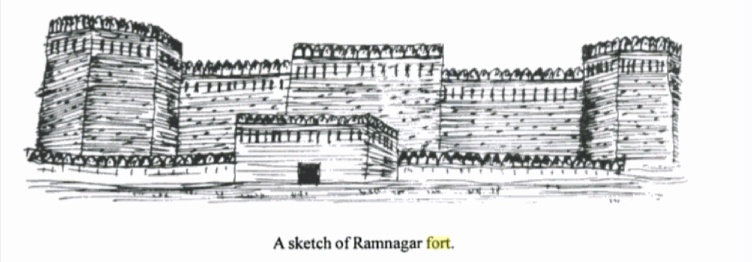MORIYA RAJPUTS
Maurya (apabhramsa: Mori) ruled Chittaur (named after Chitrangad Mori) as early as 7th century AD. There are several inscriptions - Jhaltapatan (690 AD), Chittor (713 CE), Kansuka Kota (738 AD), Navsari grant (738 AD), and Bauka-Jodhpur (837 AD), which attest their political presence [1]. As per Chachnama, after having usurped the power of the Rai of Alor, Sahasi, Chach who was father of Dahir, received a serious threat from the king of Chittor - Maharat Mori [2].
Guhila acknowledgement of Mori sovereigns is evident from the subordinate titles of Kiskindha Guhilots such as vapt-asesa-mahasabdah, samadhigata-panc-mahasabdah, samuparjjita-panc-mahasabdah [3]. It is also reflected through Dhavagarta Guhilot chief Dhanika’s reference to his overlord as “paramabhattaraka maharajadhiraja paramesvara sri dhavalappadesvapravardhamanarajye” , a reference to Chittor’s ruler Dhavalapadev Mori in Dabok inscription (644 AD)[4].
Raja Man Maurya was a contemporary and uncle of Kalbhoj Guhilot (alias Bappa Rawal) who also established the Mansarovar tank near Chittorgarh as per Chittor inscription dtd 713 CE. Repeated skirmishes and invasions by Arabs led by Junaid, destroyed various Mori powers in Hadauti by 690 CE, Mewar by 753 CE and Barmer region by 837 CE [5]. Most Mauryas have been absorbed into Parmar identity, while Maurya Rajputs have maintained their identity in Nimad, Shajapur, Harda districts in Madhya Pradesh, and Bhavnagar in Gujarat’s Saurashtra where they write the apabhramsa Mori. Many other Moriya or Mori Rajputs migrated further to Dharampur, Valsad district in 1783 where they were given Subedari of 66 villages by the Guhilot ruler of Dharampur. They are also distributed in Naroli, Silvasa & Gujarat [6].
CHAMBIAL RAJPUTS
Similarly, a descendant of Mushana Mori, Raja Meru Varman migrated from Ayodhya/Saket to settle Bharmor/Brahmpura in Chamba. After Mushana Mori, it is also called Mushana dynasty sometimes.
In 680 CE [7] Raja Meru Varman commissioned the Lakshana Devi temple in Bharmor, which is the oldest surviving wooden temple in India [8]. Today it is part of a Chaurasi Temple complex.
Shivshakti Temple, Bharmor at 7000 feet, source: here
Around 920 CE, Raja Sahilverman, established the town of Chamba and named it after his daughter Champavati. Hence the capital was shifted from Bharmour at 7000 ft to Chamba at lower attitude, this city gave the State and the clan its name. The Chambials continued to rule the region until independence. Chambiyals are found in Chamba, Kangra and Hamirpur.
BANDRAL RAJPUTS
The 24th ruler of Chamba was Raja Vichitar Varman, whose younger brother Bahattardev established the Bandralta State, with capital Ramnagar, about 38 kms from Udhampur.This branch of Chambials came to be known as Bandral which continued to rule Bandralta until 1821, when the last ruler Bhupendradev Bandral was forced to retire to Ambala, Haryana. The hill state of Bandralta was bestowed upon Suchet Singh, the brother of Gulab Singh Jamwal [9]. Bandrals are found in Udhampur and Jammu.
Bandralta Fort, Ramnagar, built originally by Bandral lords; repaired by Suchet Singh Jamwal [10].
References
-
GSL Devra, Arab Invasion and Decline of Western Maurya Confederacy, IHC 76th session, p.195 ↩︎
-
ibid ↩︎
-
Nandini Kapur Sinha, Mewar: State Formation in Rajasthan, p.35 ↩︎
-
ibid ↩︎
-
J N Asopa, Origin of Rajputs, p. 169 ↩︎
-
Daman & Diu, K S Singh, RB Solanki; p. 87 ↩︎
-
Omacanda Handa (2001); Temple Architecture of the Western Himalaya: Wooden Temples; p. 136-148 ↩︎
-
Hermann Goetz (1955); The Early Wooden Temples of Chamba; p. 14,59-65,75-83 ↩︎
-
Asoka Jerath, Forts and Palaces of the Western Himalaya, p. 86 ↩︎
-
ibid ↩︎

